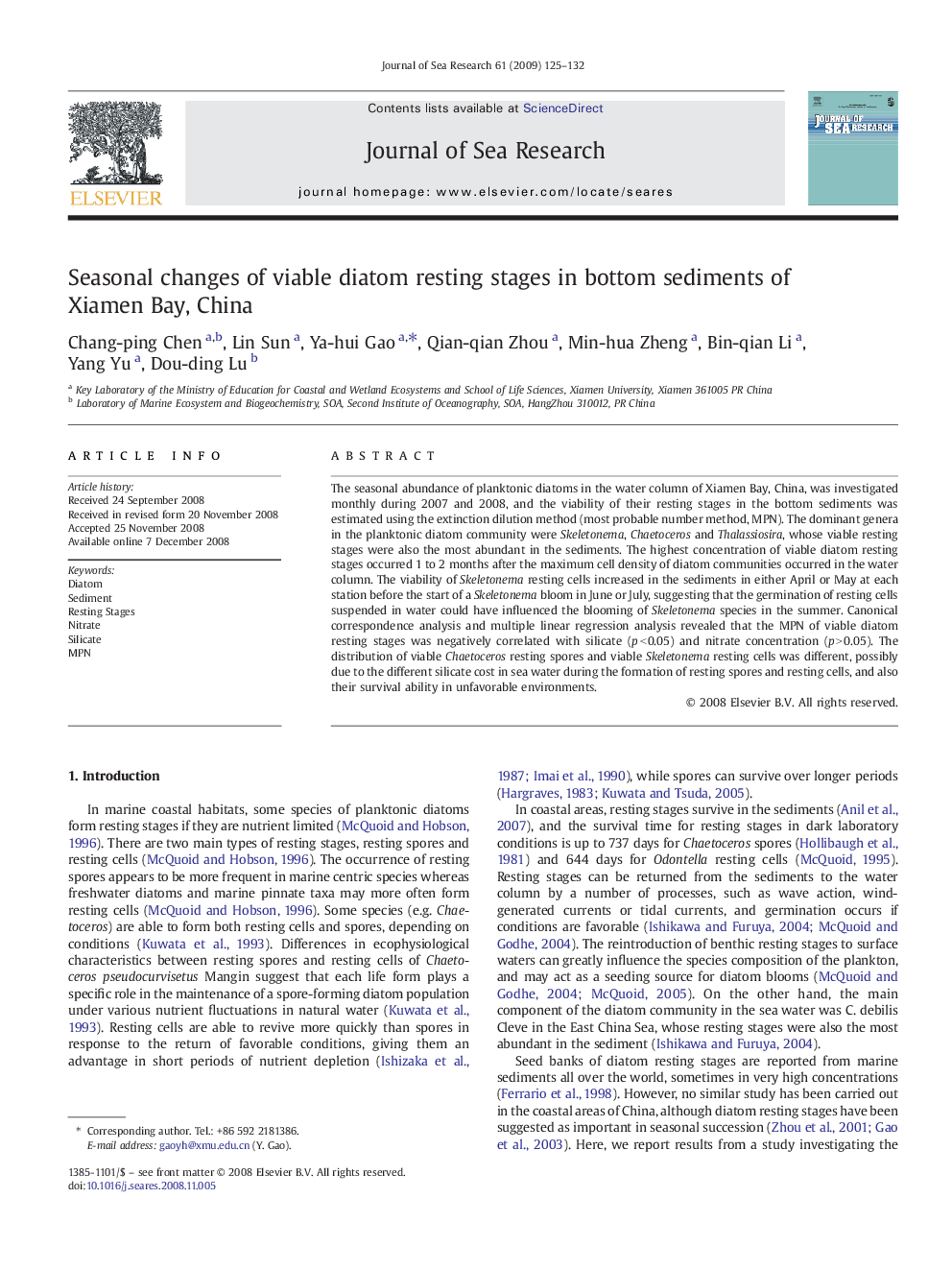| Article ID | Journal | Published Year | Pages | File Type |
|---|---|---|---|---|
| 4550062 | Journal of Sea Research | 2009 | 8 Pages |
Abstract
The seasonal abundance of planktonic diatoms in the water column of Xiamen Bay, China, was investigated monthly during 2007 and 2008, and the viability of their resting stages in the bottom sediments was estimated using the extinction dilution method (most probable number method, MPN). The dominant genera in the planktonic diatom community were Skeletonema, Chaetoceros and Thalassiosira, whose viable resting stages were also the most abundant in the sediments. The highest concentration of viable diatom resting stages occurred 1 to 2 months after the maximum cell density of diatom communities occurred in the water column. The viability of Skeletonema resting cells increased in the sediments in either April or May at each station before the start of a Skeletonema bloom in June or July, suggesting that the germination of resting cells suspended in water could have influenced the blooming of Skeletonema species in the summer. Canonical correspondence analysis and multiple linear regression analysis revealed that the MPN of viable diatom resting stages was negatively correlated with silicate (p < 0.05) and nitrate concentration (p > 0.05). The distribution of viable Chaetoceros resting spores and viable Skeletonema resting cells was different, possibly due to the different silicate cost in sea water during the formation of resting spores and resting cells, and also their survival ability in unfavorable environments.
Related Topics
Physical Sciences and Engineering
Earth and Planetary Sciences
Oceanography
Authors
Chang-ping Chen, Lin Sun, Ya-hui Gao, Qian-qian Zhou, Min-hua Zheng, Bin-qian Li, Yang Yu, Dou-ding Lu,
